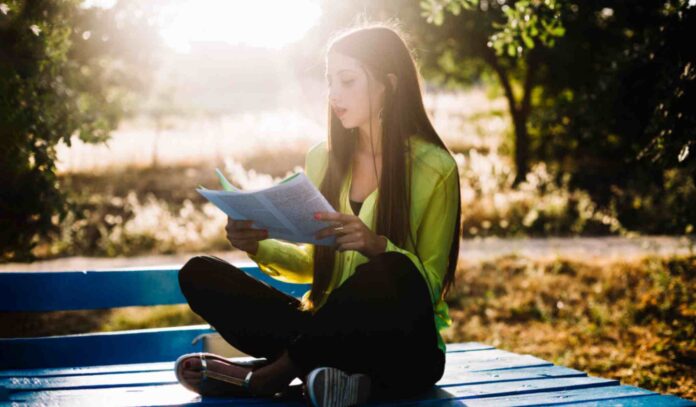We live in a fast-paced, constantly connected world that bombards us with information and distractions from every angle. For students, keeping focused and managing all the pressures can be extremely challenging. But what if there was a simple tool that could help them tune into the present moment, reduce stress, and improve their well-being? That’s where mindfulness comes in.
Mindfulness is the practice of purposely bringing one’s attention to the present moment without judgment. By cultivating mindfulness, students can develop greater self-awareness, emotional regulation, and resilience – key skills for academic and personal success.
In this article, we’ll explore the transformative potential of mindfulness in education and how it can benefit students, teachers, and the entire school community. So take a deep breath, get comfy, and let’s dive into the mindful world of classrooms.
Key Takeaways
- Mindfulness practices improve focus, emotional regulation, and resilience in students.
- Integrating mindfulness into the curriculum can reduce teacher stress and burnout.
- A mindful classroom environment fosters collaboration, empathy, and positive relationships.
- Schools can implement mindfulness through activities, training, and environmental changes.
Benefits of Mindfulness in Education
Enhanced Student Performance
In today’s fast-paced educational environment, students face numerous challenges that can affect their ability to focus, learn, and achieve their full potential. However, research shows that mindfulness can be a powerful tool in enhancing student performance in various ways.
Improved Focus and Concentration
One of the most well-known benefits of mindfulness is its ability to improve focus and concentration. By practicing mindfulness activities like deep breathing exercises, body scans, and guided meditations, students can learn to quiet their minds, reduce distractions, and concentrate more effectively on their studies.
For example, a simple mindfulness exercise like the “Breathing Buddy” can help younger students develop their attention skills. In this activity, students place a small stuffed animal on their belly and focus on making it move up and down with their breath. This playful yet powerful exercise teaches kids to pay attention to their bodies and stay present.
Better Emotional Regulation and Self-Awareness
Let’s face it – being a student can be stressful! From juggling homework and extracurriculars to navigating social dynamics and self-discovery, students today deal with a lot of big emotions. Mindfulness practices can help them become more aware of their feelings and learn to manage difficult emotions in a healthy way.
One effective mindfulness activity for emotional regulation is the “Emotion Check-In.” At the start of class, students rate their current emotional state on a scale and identify the emotion they’re feeling. This simple exercise encourages self-awareness and normalizes the full range of human emotions.
Increased Resilience and Adaptability
In addition to managing immediate stressors, mindfulness can also help students develop resilience and adaptability – crucial skills for navigating life’s inevitable challenges. By cultivating a non-judgmental, present-focused mindset, students can learn to respond to difficulties with greater flexibility and self-compassion.
A helpful mindfulness activity for building resilience is the “Gratitude Journal.” At the end of each week, students write down things they’re grateful for, no matter how small. This simple practice helps shift their perspective towards appreciation and positivity, even during tough times.
Teacher Well-being and Job Satisfaction
While the benefits of mindfulness for students are clear, let’s not forget about the superheros on the front lines – teachers! Educators face immense pressures and demands, which can lead to high levels of stress, burnout, and job dissatisfaction. However, mindfulness practices offer a path towards greater well-being for teachers, too.
Reduced Stress and Burnout
Teaching is one of the most demanding and stressful professions out there. From managing classroom behaviors to meeting curricular demands, teachers often find themselves stretched thin. Mindfulness practices like meditation, yoga, and deep breathing exercises can help teachers reduce their stress levels and prevent burnout.
As one teacher shared, “After a particularly chaotic day, I’ll take ten minutes to do a body scan meditation. It helps me release the tension I’ve been carrying and approach the next day with a fresher mindset.”
Improved Job Satisfaction and Relationships
When teachers feel more centered and resilient, it positively impacts their job satisfaction and relationships with students. Mindfulness helps teachers stay present, patient, and attuned to their students’ needs, fostering a more positive and supportive classroom dynamic.
One example of a mindfulness activity that promotes positive teacher-student connections is the “Mindful Listening” exercise. In this activity, pairs of students take turns speaking and listening without interrupting. Teachers can model this practice, too, by giving students their full, non-judgmental attention during conversations.
Classroom Environment and Culture
Mindfulness isn’t just about individual practices – it can also shape the entire classroom environment and culture in profound ways. By integrating mindfulness into daily routines and interactions, schools can create a more positive, collaborative, and empathetic learning community.
Positive and Supportive Learning Environment
When students and teachers alike practice mindfulness, it sets the tone for a calmer, more focused, and supportive classroom atmosphere. Simple practices like starting each day with a brief mindfulness exercise can help everyone transition into a state of presence and readiness to learn.
One school has adopted a “Mindful Morning” routine, where students engage in gentle stretches, deep breaths, and a short meditation before beginning their academic lessons. Teachers report that this simple ritual helps create a sense of community and sets a positive intention for the day ahead.
Increased Collaboration and Empathy
In addition to cultivating individual presence and awareness, mindfulness practices can also foster greater collaboration, connection, and empathy among students. By learning to tune into their own thoughts and feelings, students can develop greater understanding and compassion for others’ experiences.
One powerful mindfulness activity for building empathy is the “Mindful Listening Circles.” In these circles, students take turns speaking about their experiences while others practice deep, non-judgmental listening. This exercise helps students develop crucial social-emotional skills like perspective-taking and emotional intelligence.
Implementation Strategies
At this point, you might be thinking, “This all sounds great, but how do I actually bring mindfulness into my classroom?” Fear not, dear reader – we’ve got you covered with some practical implementation strategies.
Incorporating Mindfulness into the Curriculum
Mindfulness-Based Activities
One of the most straightforward ways to integrate mindfulness is by incorporating mindfulness-based activities directly into your classroom routines and curriculum. These can range from short, simple exercises to more in-depth mindfulness lessons and units.
Here are a few examples of mindfulness activities you can try:
- Mindful Breathing Exercises: Guide students through deep belly breaths, counting inhales and exhales.
- Body Scans: Have students tune into different parts of their bodies, noticing any sensations or tension.
- Mindful Listening: Play calming sounds or music and ask students to focus on listening without judgment.
- Mindful Movements: Lead gentle stretches or yoga poses, encouraging students to move with awareness.
The key is to start small and make mindfulness practices a consistent part of your classroom routine. Even just a few minutes per day can make a big difference!
Professional Development and Training
While you don’t need to be a mindfulness expert to start incorporating practices into your classroom, receiving proper training and professional development can deepen your understanding and confidence.
Many schools and districts now offer mindfulness training workshops for educators, covering topics like:
- The science and benefits of mindfulness
- Guided mindfulness practices and activities
- Strategies for creating a mindful classroom environment
- Overcoming common challenges and obstacles
By investing in mindfulness training, you’ll not only build your own personal mindfulness skills but also gain valuable tools and resources for sharing these practices with your students.
Creating a Mindful Classroom Environment
In addition to specific mindfulness activities, you can also cultivate a more mindful classroom environment through intentional setup and student engagement strategies.
Setting Up a Mindful Classroom
The physical space of your classroom can either support or hinder mindfulness practices. Consider incorporating elements that promote a calm, focused atmosphere, such as:
- A designated “mindful corner” with cozy seating, soft lighting, and calming visuals
- Removing excess clutter and distractions from the classroom
- Playing soft, instrumental music during mindfulness activities
- Using natural elements like plants, rocks, or sand trays to help ground students
By creating a dedicated mindful space within your classroom, you’ll signal to students that it’s time to pause, breathe, and tune into the present moment.
Encouraging Student Participation
Of course, no matter how mindful your classroom setup, truly engaging students is key to successful implementation. Here are some strategies for encouraging active participation in mindfulness activities:
Make it Fun and Interactive: While mindfulness involves internal practices, that doesn’t mean the activities have to be boring! Get creative by incorporating games, stories, and imaginative scenarios that appeal to students’ senses of play and curiosity. You could go on a “breathing buddy adventure,” for example, where students imagine their stuffed animals traveling to exciting places as they focus on their breath.
Tailor Activities to Developmental Levels: Just as you differentiate academic content, do the same for mindfulness. Younger students may respond better to more active, imaginative practices, while older students could explore more abstract concepts. A first-grade class might enjoy a “Yoga Adventures” story where they move through whimsical yoga poses, while a high school group could analyze the neuroscience behind meditation.
Share Your Own Experiences: Students are much more likely to buy into mindfulness if they see you, their teacher, truly valuing and practicing it yourself. Share your personal experiences, challenges, and “mindful moments” to inspire students and model vulnerability. You could say something like, “Earlier today, I was feeling really overwhelmed with my to-do list. So I took a few mindful breaths, which helped me refocus and not feel so frazzled.”
Provide Choices and Get Their Input: Like any learning experience, mindfulness lands better when students have agency and choice. Offer a “mindfulness menu” of different activities and let students pick their favorites. Or have them design and lead mindfulness practices themselves – they’ll be more invested when they co-create the process.
Celebrate Growth and Small Wins: Developing mindfulness is a journey, not a destination. Celebrate students’ “mindful moments” and small growth along the way, whether it’s improved focus, handling frustrations better, or showing more empathy. Public recognition and positive reinforcement can motivate the whole class to keep practicing.
By making mindfulness interactive, developmentally appropriate, personal, student-led, and celebrated, you’ll increase engagement and create a classroom culture where everyone feels empowered to explore the present moment.
Conclusion
The Power of Mindfulness in Education
From enhancing academic performance and student well-being to creating more positive classroom environments, the transformative power of mindfulness in education is undeniable. By integrating simple yet profound mindfulness practices, we can equip today’s students with invaluable tools for navigating life’s stresses and challenges with greater focus, resilience, and compassion.
In our fast-paced world of constant distraction and pressure, mindfulness offers a path back to presence – helping students tune into their inner strengths, regulate difficult emotions, and connect more deeply with themselves and others. And when teachers embrace mindfulness too, it creates a ripple effect of well-being throughout the entire school community.








